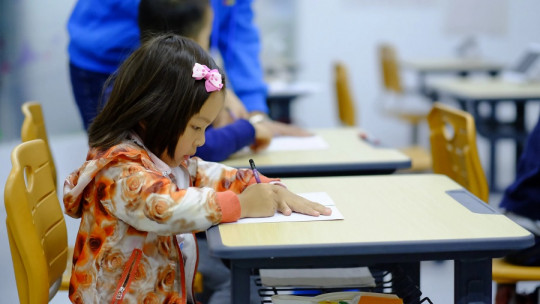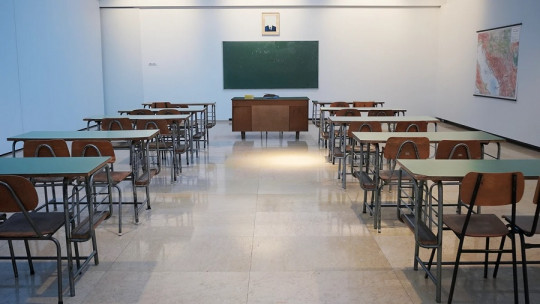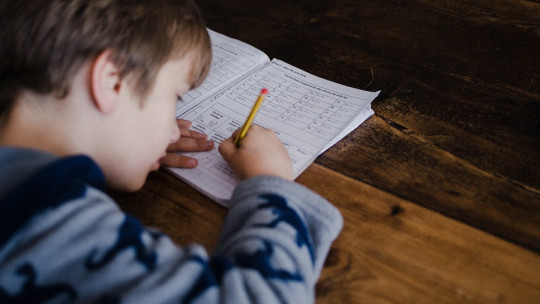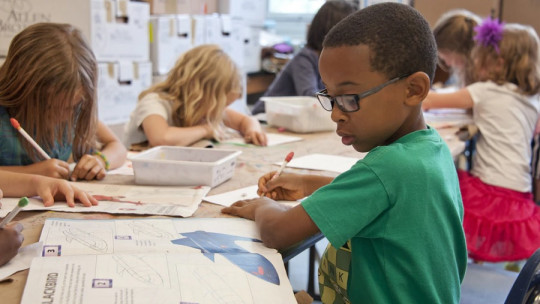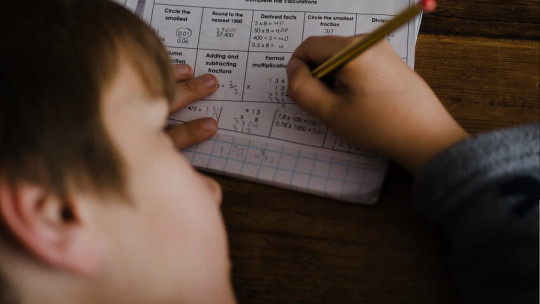
Mathematics has cost many of us a lot, and it is normal. Many teachers have defended the idea that either we have good mathematical ability or we simply don’t have it and we will hardly be good at this subject.
However, this was not the opinion of several French intellectuals in the second half of the last century. They considered that mathematics, far from being learned through theory and that’s it, can be acquired socially, by sharing possible ways to solve mathematical problems.
The Theory of didactic situations is the model derived from this philosophy, maintaining that far from explaining the mathematical theory and seeing if the students are good at it or not, it is better to make them debate their possible solutions and make them see that they can be the ones who discover the method for it. Let’s look at it further.
What is the theory of didactic situations?
Guy Brousseau’s Theory of Didactic Situations is a teaching theory that is found within mathematics didactics. It is based on the hypothesis that mathematical knowledge is not constructed spontaneously, but through the search for solutions on the learner’s own account, sharing them with the rest of the students and understanding the path they have followed to reach the solution of the mathematical problems that arise.
The vision behind this theory is that the teaching and learning of mathematical knowledge, rather than something purely logical-mathematical, involves collaborative construction within an educational community ; It is a social process. Through the discussion and debate of how a mathematical problem can be solved, strategies are awakened in the individual to reach its resolution that, although some of them may be erroneous, are ways that allow him to have a better understanding of the mathematical theory given in class.
Historical background
The origins of the Theory of Didactic Situations date back to the 1970s, a time when mathematics didactics began to appear in France having as intellectual orchestrators figures such as Guy Brousseau himself along with Gérard Vergnaud and Yves Chevallard, among others.
It was a new scientific discipline which studied the communication of mathematical knowledge using an experimental epistemology. He studied the relationship between the phenomena involved in teaching mathematics: mathematical content, educational agents and the students themselves.
Traditionally, the figure of the mathematics teacher was not very different from that of other teachers, seen as experts in their subjects. However, The mathematics teacher was seen as a great master of this discipline, who was never wrong and who always had a unique method to solve each problem This idea was based on the belief that mathematics is always an exact science and with only one way to solve each exercise, so any alternative not proposed by the teacher is wrong.
However, entering the 20th century and with the significant contributions of great psychologists such as Jean Piaget, Lev Vygotsky and David Ausubel, the idea that the teacher is the absolute expert and the learner the passive object of knowledge begins to be overcome. Research in the field of psychology of learning and development suggests that the student can and should take an active role in the construction of their knowledge, moving from a view that they should store all data that is given to them to a more partisan one. that he is the one who discovers, debates with others and is not afraid to make mistakes.
This would take us to the current situation and the consideration of mathematics teaching as a science. This discipline takes a lot into consideration the contributions of the classical stage, focusing, as one would expect, on the learning of mathematics. The teacher explains the mathematical theory, waits for the students to do the exercises, make mistakes, and makes them see what they have done wrong; now It consists of students considering different ways to reach the solution to the problem, even if they deviate from the most classic path
The didactic situations
The name of this theory does not use the word situations gratuitously. Guy Brousseau uses the expression “didactic situations” to refer to how knowledge should be offered in the acquisition of mathematics, in addition to talking about how students participate in it. It is here where we introduce the exact definition of the didactic situation and, as a counterpart, the a-didactic situation of the model of the theory of didactic situations.
Brousseau refers to “didactic situation” as that which has been intentionally constructed by the educator, with the purpose of helping his students to acquire certain knowledge
This didactic situation is planned based on problem-solving activities, that is, activities in which a problem to be solved is presented. Solving these exercises helps establish the mathematical knowledge offered in class, since, as we have mentioned, this theory is mostly used in that area.
The structure of the teaching situations is the responsibility of the teacher It is he who must design them in such a way that it contributes to the students being able to learn. However, this should not be misinterpreted, thinking that the teacher must directly give the solution. He does teach the theory and offers the time to put it into practice, but he does not teach each and every one of the steps to solve the problematic activities.
A-didactic situations
During the didactic situation, some “moments” called “a-didactic situations” appear. These types of situations are the moments in which the student himself interacts with the proposed problem, not the moment in which the educator explains the theory or gives the solution to the problem
These are the moments in which the students take an active role in solving the problem, discussing with the rest of their classmates about what could be the way to solve it or outlining the steps they should take to lead to the answer. The teacher must study how the students “manage” them.
The didactic situation must be presented in such a way that it invites the students to take an active part in solving the problem. That is, the didactic situation designed by the educator must contribute to the creation of non-didactic situations and cause them to present cognitive conflicts and ask questions.
At this point the teacher must act as a guide, intervening or answering the questions but offering other questions or “clues” about what the path to follow is, he should never give them the solution directly.
This part is really difficult for the teacher, since they must have been careful and made sure not to give clues that are too revealing or, directly, ruin the process of finding the solution by giving their students everything. This is called the Return Process and it is necessary that the teacher has thought about which questions his answer should suggest and which ones he should not making sure that it does not spoil the process of acquiring new content by students.
Types of situations
Didactic situations are classified into three types: action, formulation, validation and institutionalization.
1. Action situations
In action situations, an exchange of non-verbalized information occurs, represented in the form of actions and decisions. The student must act on the environment that the teacher has proposed, putting the implicit knowledge into practice acquired in the explanation of the theory.
2. Formulation situations
In this part of the didactic situation the information is formulated verbally, that is, it is talked about how the problem could be solved In the formulation situations, the students’ ability to recognize, decompose and reconstruct the problematic activity is put into practice, trying to make others see through oral and written language how the problem can be solved.
3. Validation situations
In validation situations, as its name indicates, the “paths” that have been proposed to reach the solution to the problem are validated The members of the activity group discuss how the problem proposed by the teacher could be solved, testing the different experimental routes proposed by the students. It is about finding out if these alternatives give a single result, several, none and how likely it is that they are right or wrong.
4. Institutionalization situation
The institutionalization situation would be the “official” consideration that the teaching object has been acquired by the student and the teacher takes it into account It is a very important social phenomenon and an essential phase during the didactic process. The teacher relates the knowledge freely constructed by the student in the a-didactic phase with cultural or scientific knowledge.

